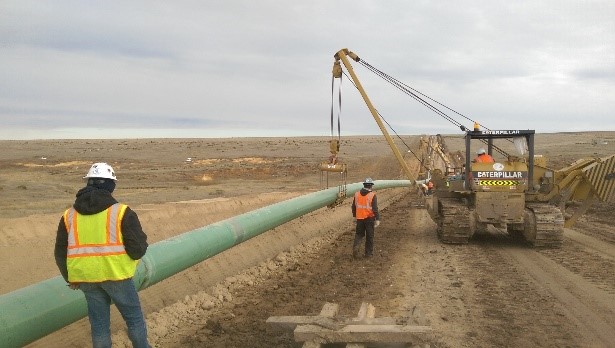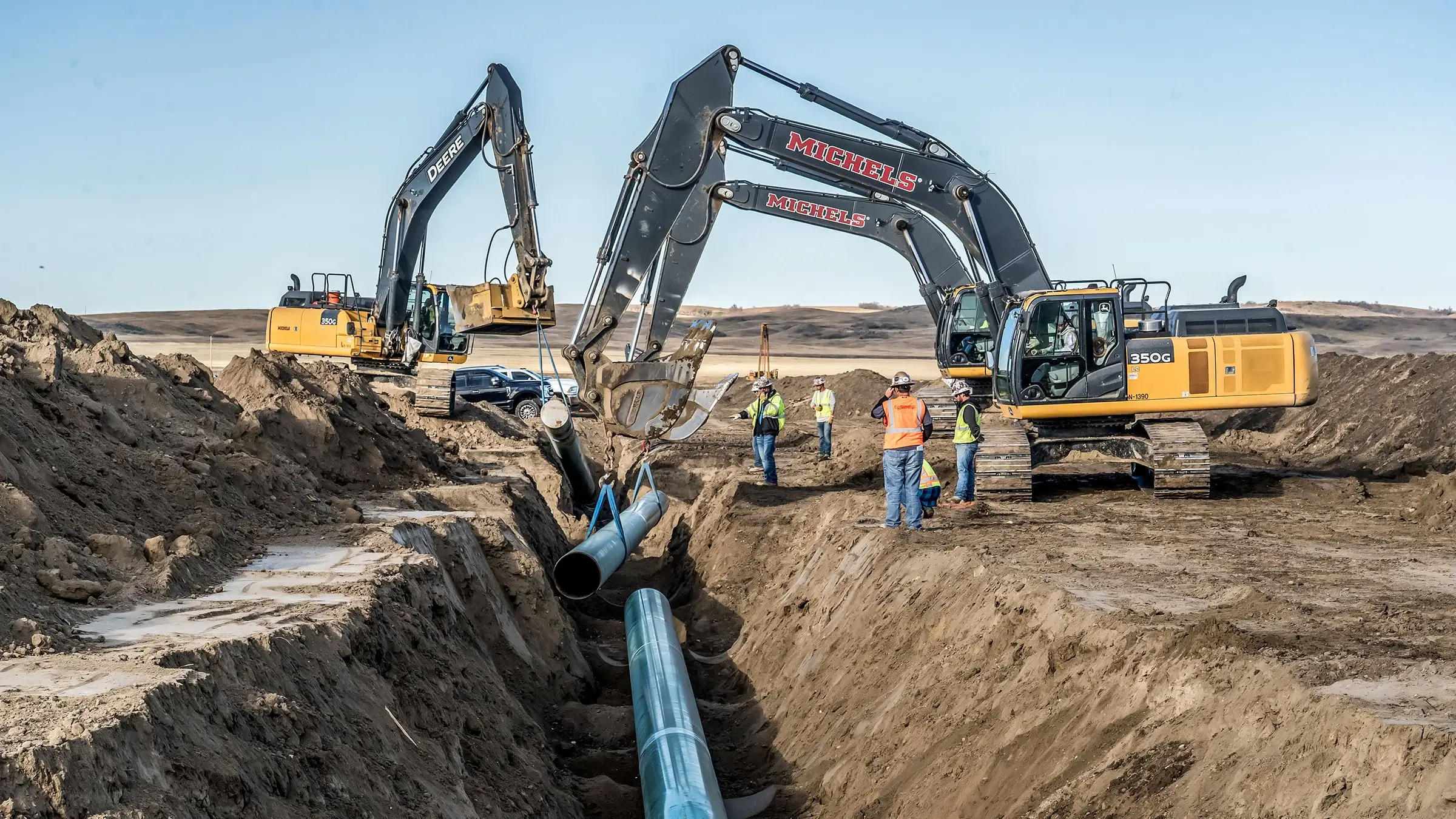Success Begins With Proper Creek Pipe HDPE installation
Recognizing the Essentials of Pipes Installation: What You Need to Find Out About the Process
Correct pipe installation is crucial for any type of pipes system. It calls for careful consideration of different aspects, including material selection and adherence to neighborhood guidelines. A well-planned format can avoid issues like pressure loss, while the right tools guarantee efficient signing up with strategies. Even experienced installers can make usual blunders. Understanding these essentials can bring about a more efficient and resilient system, prompting a more detailed check out the crucial elements included in the process.
Picking the Right Products for Pipe Installation
When taking into consideration pipe installation, the option of appropriate materials is necessary to making certain toughness and capability. Different products are readily available, each offering unique advantages and factors to consider. PVC pipes are lightweight, immune to deterioration, and affordable, making them excellent for property pipes. Conversely, copper pipelines, recognized for their long life and capability to hold up against heats, are typically favored for home heating systems.Additionally, galvanized steel pipelines give toughness and sturdiness, appropriate for sturdy applications, although they are at risk to corrosion over time.For below ground setups, polyethylene pipelines are preferred due to their adaptability and resistance to stress cracking. Correct product choice depends on the particular demands of the job, consisting of stress rankings, temperature variants, and the chemical nature of the liquids being transported - Creek Pipe Midland. Ultimately, informed selections relating to pipe products contribute greatly to the overall success and longevity of plumbing systems
Recognizing Local Building Ordinance and Rules
How can recognizing local building ordinance and policies influence pipe installation? Familiarity with these codes is crucial for making sure that pipe installments are secure, compliant, and reliable. Local building regulations describe specific needs relating to materials, installation strategies, and safety procedures, which need to be abided by in order to avoid prospective legal problems and pricey fines.Failure to abide can cause inspections being stopped working, hold-ups in task conclusion, or perhaps mandated removal of incorrectly installed pipes. Additionally, understanding zoning laws and regulations can affect the kind of products permitted, in addition to the approaches utilized for installation.Contractors and homeowners alike must invest time in assessing neighborhood regulations before beginning any installation project. This aggressive method not only promotes safety but additionally improves the total high quality and resilience of the pipes system, inevitably promoting lasting capability and complete satisfaction.
Preparation Your Pipe Layout and Layout
Correct planning of pipe layout and style is necessary for attaining a reliable plumbing system. This procedure starts with assessing the certain needs of the space, thinking about the area of components and home appliances. Precise measurements ensure that pipelines are properly directed, reducing bends and transforms that can bring about push loss.Consideration of the circulation rates and the sorts of products utilized is essential, as different products have varying toughness and compatibility with plumbing systems. In addition, the developer should represent future developments or alterations to the format, enabling for adaptability in instance of renovations.Efficient drainage and air flow are additionally substantial parts of the design, as they stop clogs and ensure proper waste elimination. Finally, collaboration with regional building ordinance guarantees conformity and safety, which is extremely important in any type of pipes installation project.
Necessary Devices and Equipment for Installation
Successful pipe installation pivots on having the right tools and tools handy. Crucial tools consist of pipe cutters for tidy cuts, wrenches for tightening up fittings, and pliers for gripping and transforming pipelines. Additionally, a level guarantees pipelines are mounted evenly, while a gauging tape aids in attaining specific lengths.For specific materials, a blowpipe may be required for copper pipes, while a PVC cutter is essential for plastic choices. Security equipment, such as gloves and safety glasses, safeguards installers from prospective dangers during the process.A pipe bender can be particularly beneficial for producing smooth curves without compromising honesty, while a torque wrench guarantees that links are secured to the supplier's specifications.Having these devices easily offered not only promotes a smoother installation process however also adds to the overall sturdiness and performance of the pipes system. Appropriate tools is vital in attaining durable results.
Methods for Correct Pipe Signing Up With and Sealing
Achieving a secure and leak-free connection in between pipes needs careful focus to joining and sealing strategies. Various methods exist, each matched to different pipe materials and applications (Creek Pipe reviews). Welding is typically utilized for metal pipes, ensuring durable links via warm fusion. In comparison, plastic pipes take advantage of solvent concrete or blend welding, developing strong, permanent bonds.Threaded links prevail in both metal and plastic piping, needing specific placement and using proper sealants, such as Teflon tape or pipe dope, to avoid leakages. Source Compression installations offer one more option, where mechanical pressure secures the pipelines together, making them easily dismantled for maintenance.Regardless of the approach chosen, proper prep work is crucial. This consists of cleaning pipe finishes and guaranteeing they are totally free from debris. Implementing these methods vigilantly will boost the long life and integrity of the pipe system, inevitably contributing to its effective performance
Common Mistakes to Stay Clear Of Throughout Installation
During pipe installation, staying clear of typical errors is important for making sure a reputable and reliable system. One regular mistake is falling short to determine and cut pipes properly, which can lead to inappropriate installations and leakages. In addition, neglecting to inspect the compatibility of materials can cause deterioration or other damage over time. Poorly securing joints and links can likewise create weak factors in the system, causing potential failures.Another common blunder is ignoring the value of incline and drainage; pipelines have to be mounted at the appropriate angle to facilitate proper circulation. Poor support for pipes can lead to drooping and stress, affecting the integrity of the system. Eventually, clogged sewer line neglecting neighborhood codes and regulations can lead to pricey rework and security hazards. By recognizing these challenges, installers can substantially enhance the resilience and efficiency of pipe systems.
Upkeep Tips for Long-lasting Pipe Equipments
To assure the long life of pipe systems, routine inspections and cleansing are necessary methods. These steps aid recognize prospective concerns before they rise right into significant issues. Furthermore, employing correct insulation strategies can even more shield pipes from temperature level fluctuations and environmental variables.
Normal Assessments and Cleansing
Normal assessments and cleansing are crucial for preserving the long life and effectiveness of pipe systems. Consistently examining pipelines for indicators of rust, leakages, or clogs can assist determine possible issues prior to they escalate into expensive repair services. Cleaning pipes periodically gets rid of build-up that can restrict flow and advertise degeneration. It is suggested to arrange assessments a minimum of annually, yet extra regular checks may be necessary in high-usage settings. Using specialist services for extensive cleansing guarantees that all debris is efficiently removed. In addition, keeping records of examinations and maintenance activities help in tracking the system's wellness in time - Creek Pipe reviews. By focusing on these practices, homeowner can enhance the dependability and life-span of their pipe systems
Appropriate Insulation Methods
Effective insulation methods play an essential function in maintaining the efficiency and longevity of pipe systems. Correct insulation reduces heat loss in warm water pipes and prevents cold in cool water pipelines, significantly decreasing power costs and potential damage. Usual materials used for insulation consist of fiberglass, foam, and rubber, each offering varying levels of thermal resistance. It is crucial to ensure that insulation is used uniformly, covering all revealed next areas without gaps. Furthermore, securing insulation with proper fasteners helps preserve its setting and efficiency over time. Regular inspections need to be conducted to identify damage, guaranteeing prompt substitutes. By applying these techniques, pipe systems can operate successfully and have an extensive solution life, inevitably profiting both the environment and the house owner.

Frequently Asked Concerns
How Do I Establish the Appropriate Pipe Dimension for My Project?
Identifying the appropriate pipe size entails assessing the task's flow requirements, stress specs, and the kind of liquid being transferred. Consulting layout criteria and carrying out calculations warranties excellent performance and effectiveness in the installation process.
What Are the Ecological Effects of Different Pipe Materials?

Can I Set Up Pipes Myself or Should I Work with a Specialist?
The question of whether to install pipelines independently or hire a professional commonly depends on the person's ability degree and task complexity. A professional may guarantee conformity with guidelines and lower possible lasting issues.

The Length Of Time Can I Anticipate My Pipe Installation to Last?
The long life of pipe installation differs considerably, commonly lasting 20 to 100 years, depending on materials, installation top quality, and maintenance. Regular evaluations and appropriate care can improve toughness and avoid early failures.

What Are the Indications of a Failing Pipe System?
Indications of a stopping working pipe system include frequent leakages, uncommon water pressure adjustments, blemished water, mold and mildew development, and relentless wetness. Home owners ought to monitor these indications to avoid pricey damage and guarantee timely repairs are made.